A Wild Unfurling.
A wild unfurling of snow before Christmas jolts me back years. It provokes memories of working outdoors with horses & cows, in the 80s & 90s. Outdoor clothing wasn’t what it is now, and there were daily battles with chilblains on fingers, toes and thighs.
But I’ve such a hankering for it anyway. Trotting uphill into driving snow, riding one horse and leading another, flakes flying like so many wet stars into your face, mouth and eyes, human and horse heads bowed. And all those snowy mornings, bringing the riding school ponies in, their coats springing out straight from their bodies, trapping an inch–thick layer of air, warmed against skin. And being close to an animal, sharing the warmth: a wet, woollen-gloved hand pushed between a shoulder and a rug, or under a thick mane, sweetly huffed hay-and-apple breath on your cheek. I remember all the necessary tricks, too. A thermos of hot water tipped over the bolts to unfreeze them, and tinfoil wrapped around socked feet to try and keep the heat in.
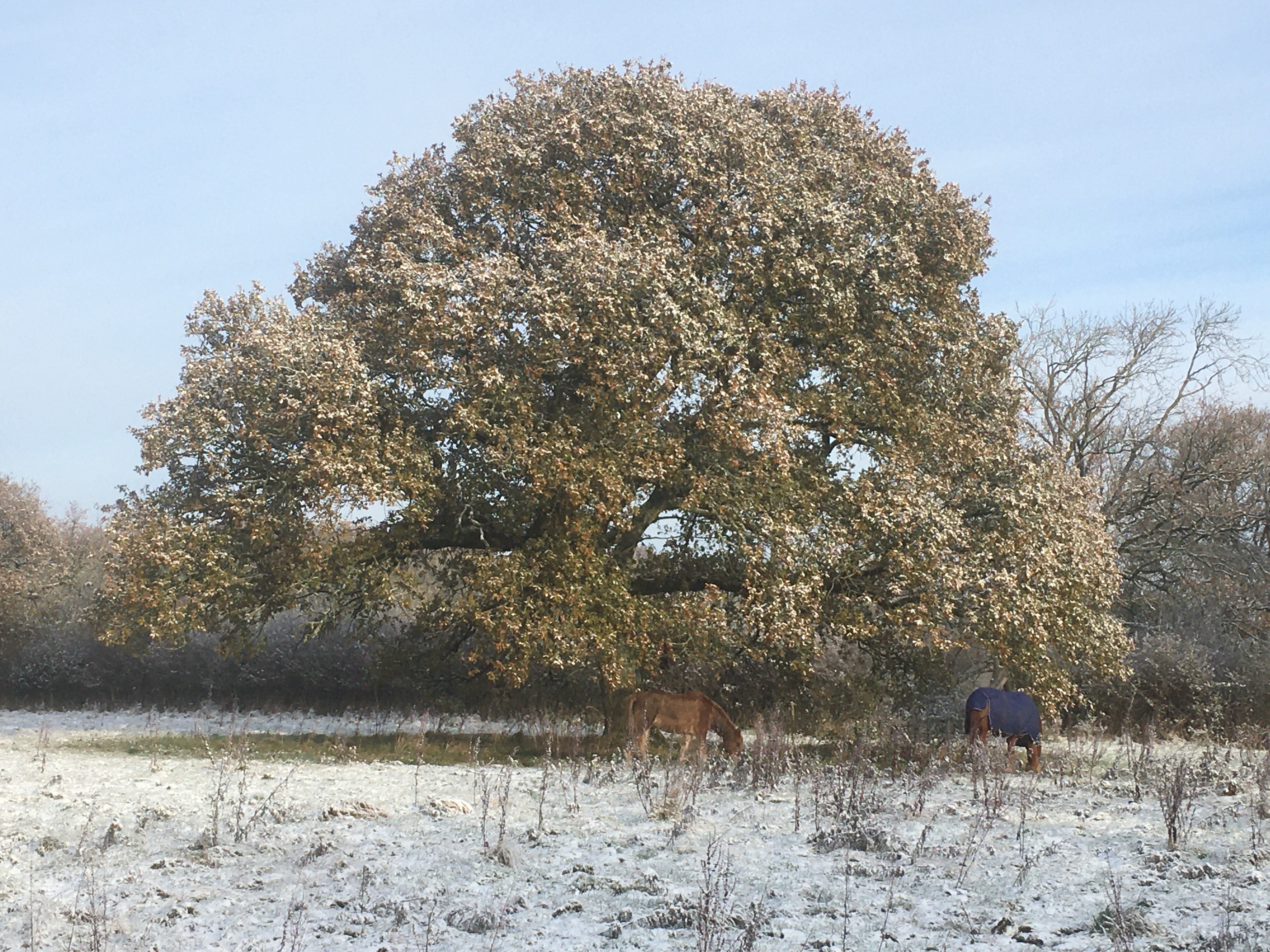
In the field, the horses are warm, despite white-frosted whiskers. The little whorled stars of hair on their top lips, mumbling snow for the grass underneath.
One of the thatched estate cottages looks pretty as a Christmas card, the farmer long gone out to break ice much earlier than me. I track a fox, three types of deer, rabbit and hare up the Gallows Down before the snow goes. The old long barrow like a ship stilled on the top of its big swell; the gibbet, a mast without sails.
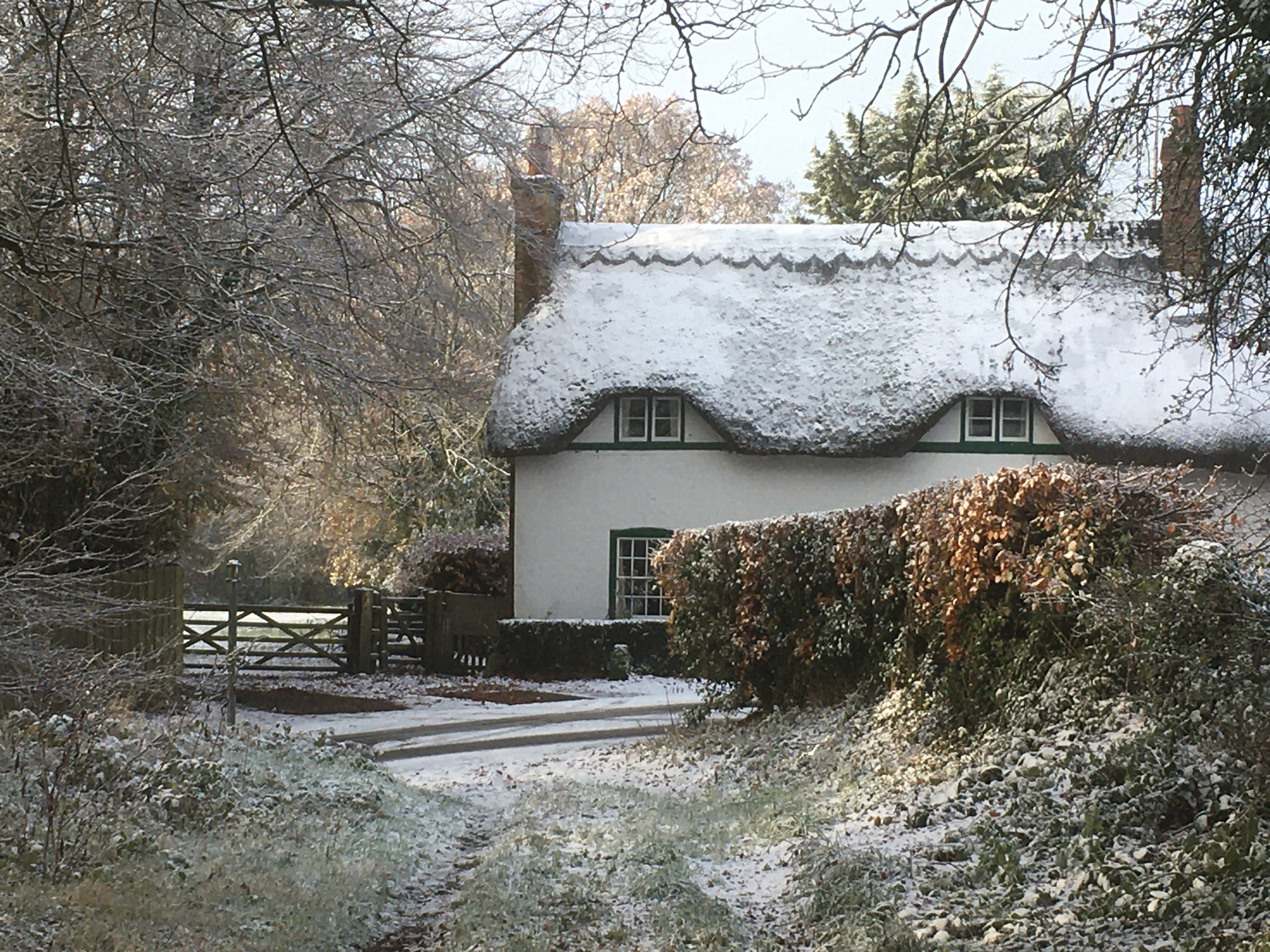
Below, I find more evidence of the mini tornado that came through a couple of weeks ago. An iconic oak at The Manor Farm has been uprooted. Next to a dying ash tree, still standing, it seems particularly cruel. Many other trees were damaged, with substantial boughs ripped off and tops snapped. This tree and its great, gnarly roots have sheltered generations of lambs, as well as a long gone, ancient, tiny farmworkers’ cottage.
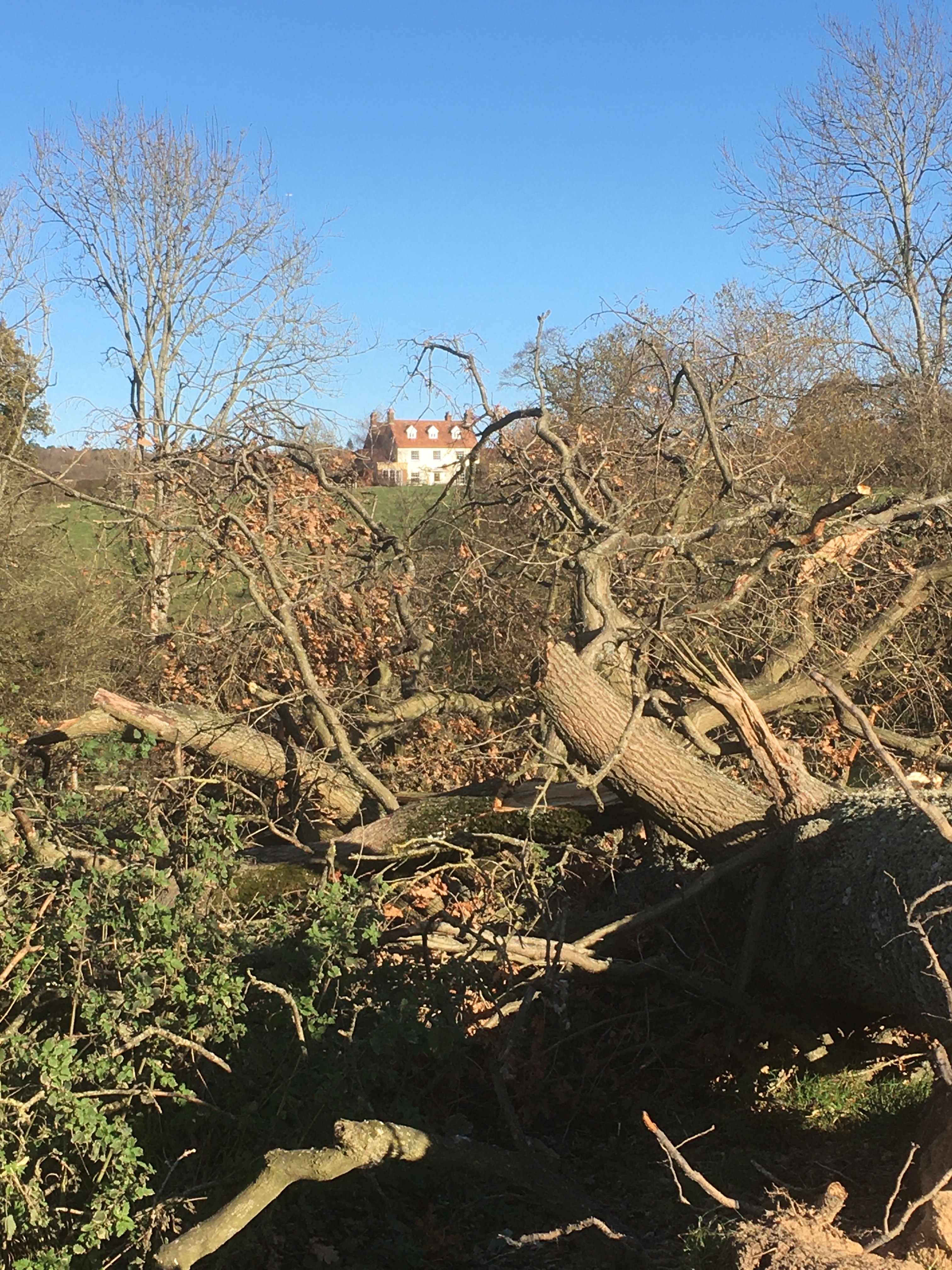
Birds flit through its downed crown. And I think, when this tree was a sapling, how many birds there were. The ‘Red List’ of Britain’s most endangered birds increased last week to 70 species, with swift, house martin and greenfinch added. Greenfinch! That stalwart of garden birds, 62% down since 1993 and swifts and house martins, that live among us on our buildings, more than halved.
Our wildlife is in freefall.
Just before the snow melts, a fox leaves its earth, a chestnut streak, like a fallen beech leaf, the white tip on its tail brighter than the snowfield.
The following evening, my youngest daughter and I go out as the sun sets, into the dusky, blackbird ‘pinking hour’, with the birds calling their night-settling chink, pink, pink alarm and the sky flooded slate and apricot.
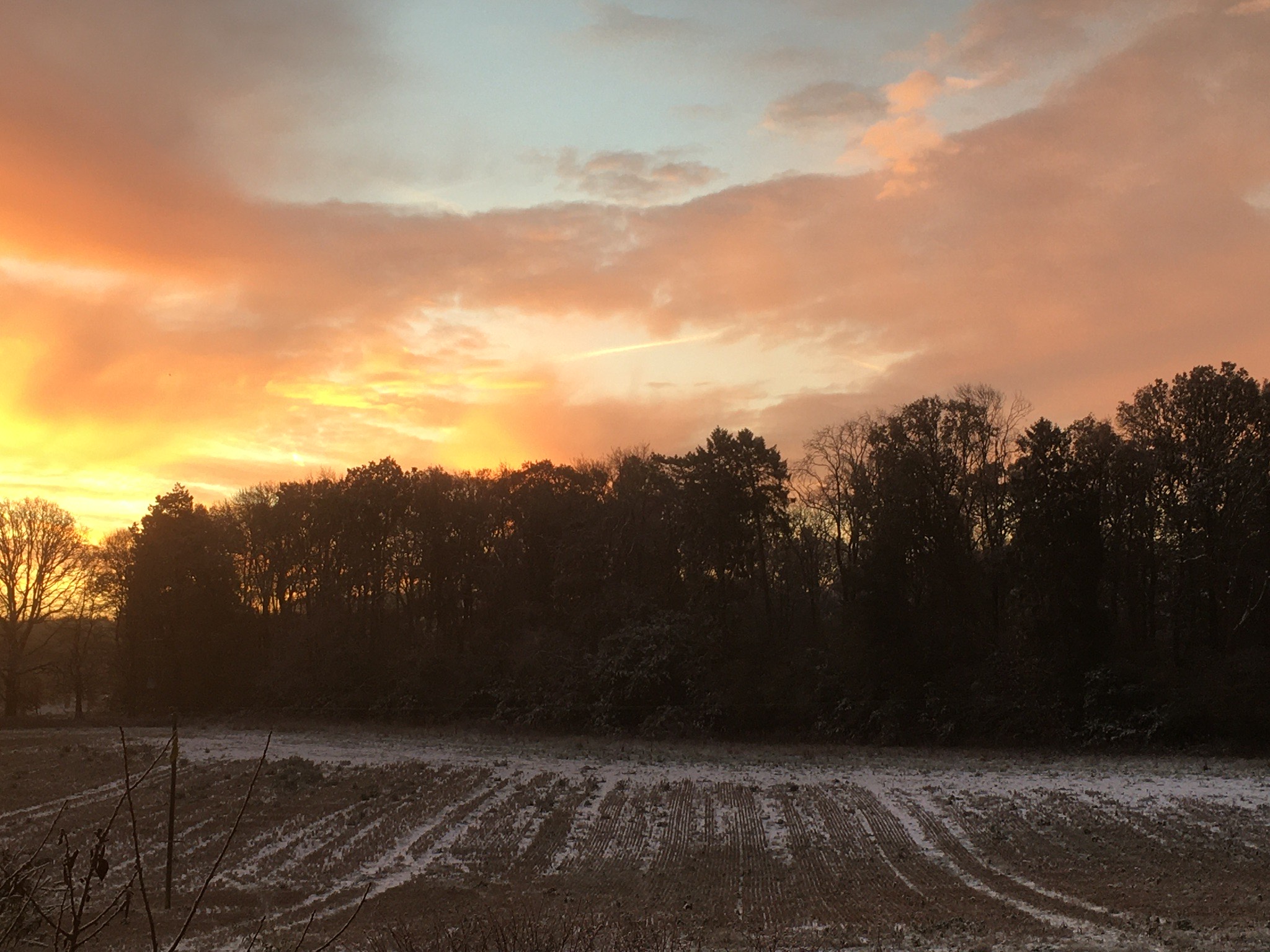
We lean over the farm gate and watch as a barn owl, like a large white moth, floats over the grassy headland. It settles in a hedgerow tree for a moment, and then comes rowing up the hedge towards us. And keeps coming, the flat saucer of its face searching the grass, broad, rounded wings propelling it on. A few feet away, it turns; so I seize my chance and ‘squeak’ it, making the sound of a prey animal. I get its attention immediately, and it comes right to us, hovering just above our heads. My daughter gasps. We can see every detail: that grey-flecked, heart-shaped satellite-dish face, the thick, feather-furred legs, rounded, angel wings. We are spellbound. Delighted. Then, for good measure, the owl makes a small circuit, and hovers over us again. We are held in that dark, dewpond-eyed gaze, like a pair of bank voles. Satisfied we are nothing to eat, it sculls away up the dark lane, above a bank of mist forming, as if it were oaring along a stream. It passes us 3 more times on the way home, flying alongside at hedge-height, quartering a field; and last, screeching as it flies on. It felt like being taken for a walk by an owl. Our most memorable moments have been spent in nature. When the losses bite, we’ll hold onto that one.
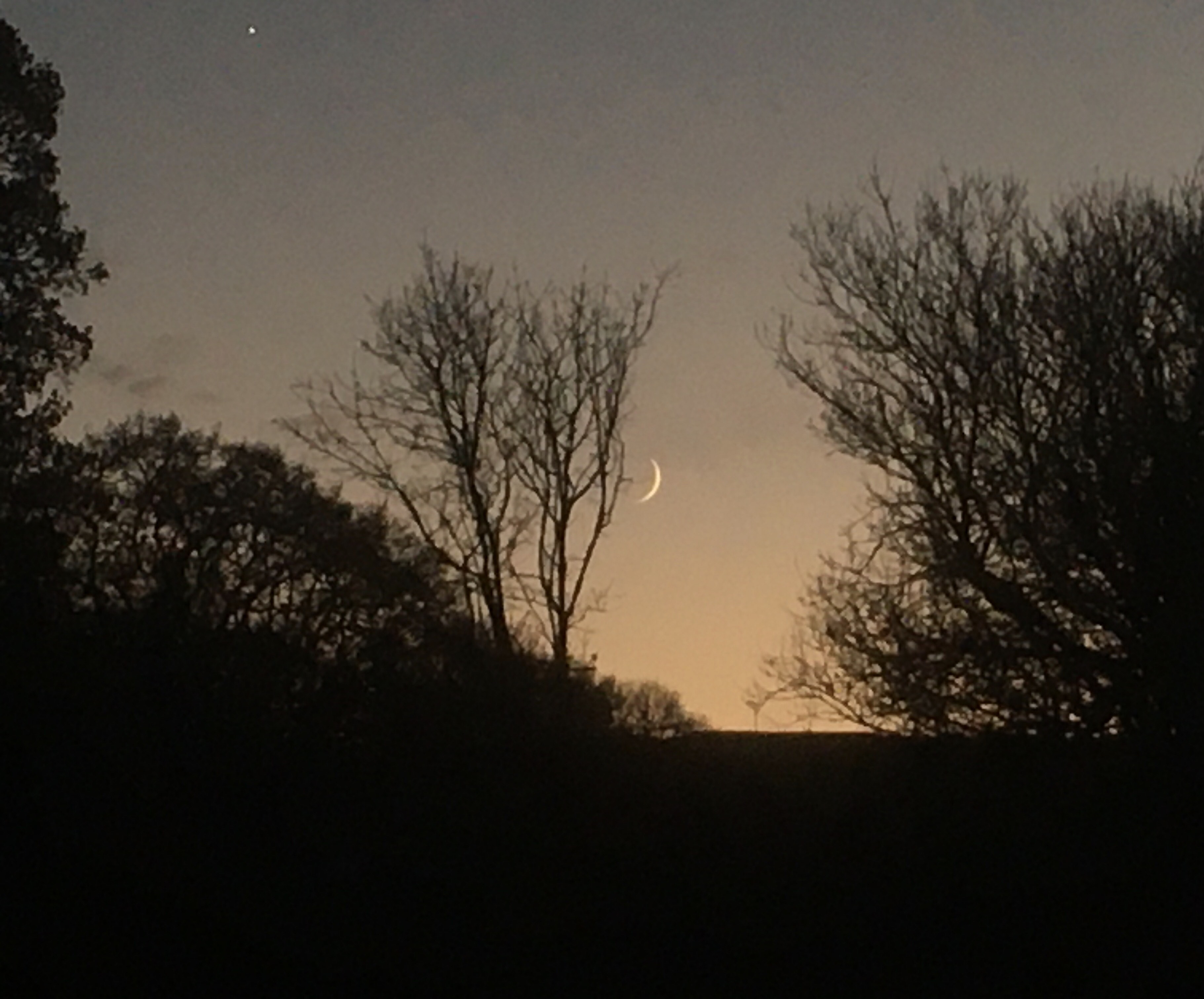
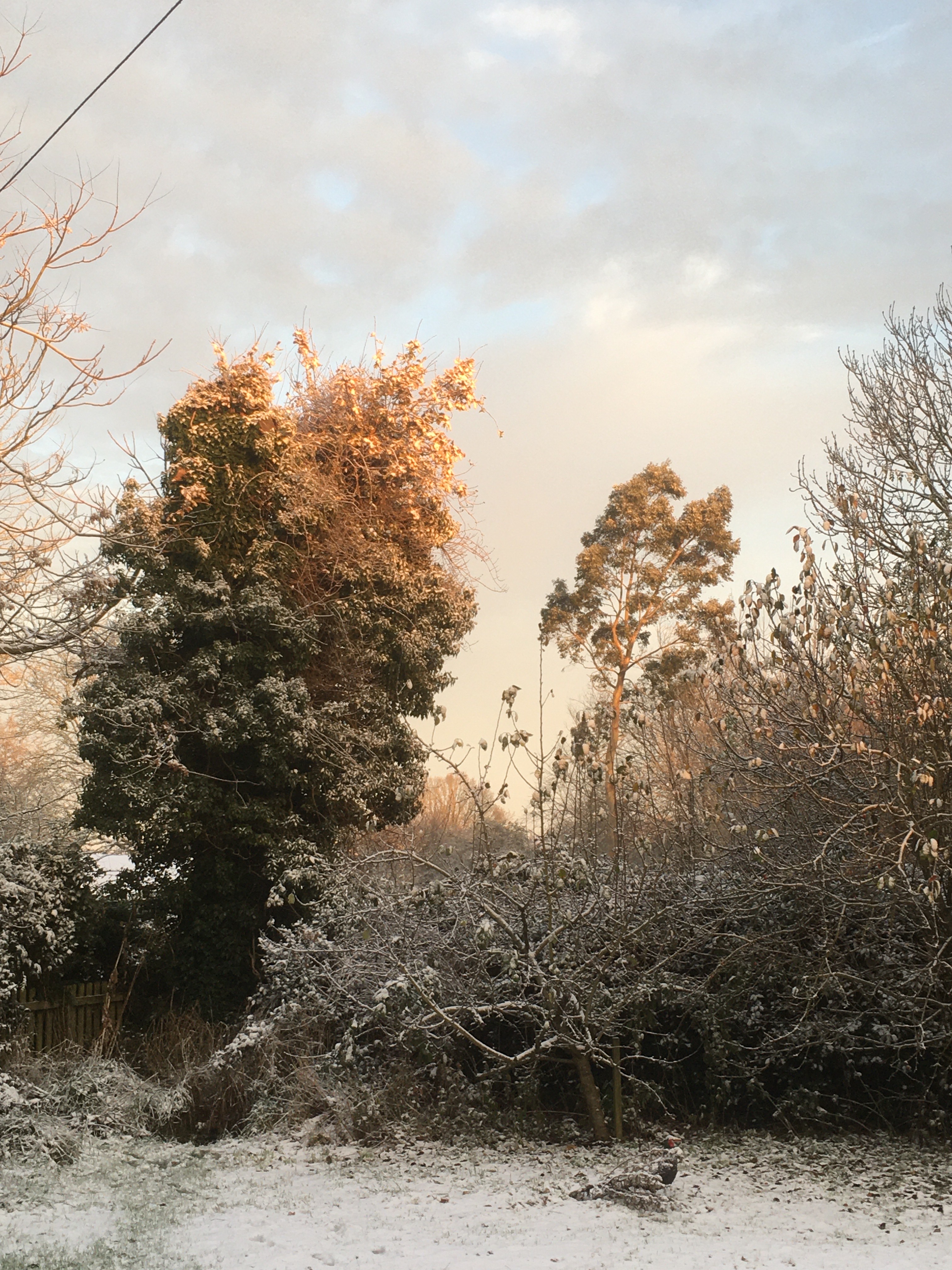
Leave a comment